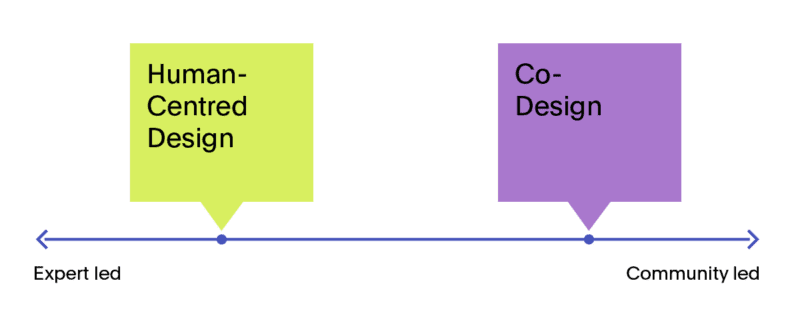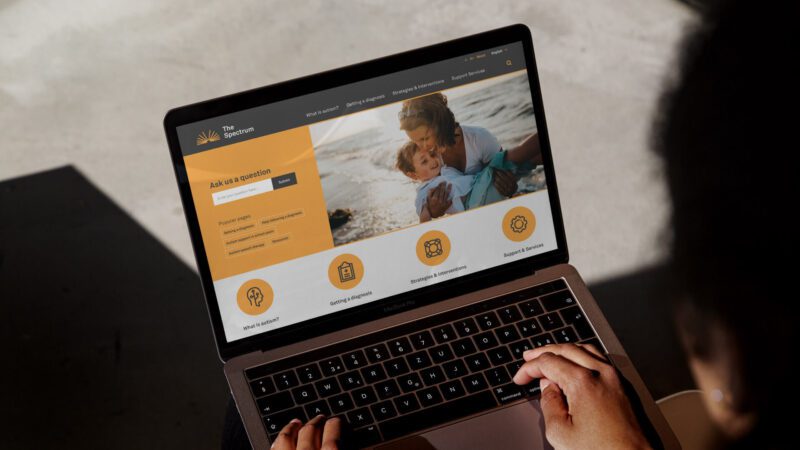For marketing types and creatives the term “co-design” can spark fear into our fragile hearts.
Conjuring memories of campaign ideas left on the focus-group floor, and rounds and rounds of concept changes that lead to an outcome that resembles very little of your original vision.
We’ve all been there, and have the wounded egos to prove it.
But what if we said the future of our industry relied on our ability to adapt to our audience’s perspective, to learn how to compromise, collaborate, and truly listen.
The most effective co-design is not prescriptive or “design by committee”; it considers the user of the design first and foremost, and engages them to co-create the outcome.
Having worked on a number of co-designed projects in recent years, including The Spectrum, Autistics’ Guide To Adulthood, and more recently Face Dementia, we have tried, failed and learnt a lot about the best ways to approach this often tricky, yet ultimately rewarding process, for the better.
But first, a little about the methodology.
What is co-design?
Co-design (Co = Collaboration / Community; Design = Making / Creating) is a collaborative approach to design that actively involves community members in the decision making and creation process. It can be utilised in content production, service design, user experience design, policy making, or any space where the target audience’s lived experience will impact how they interface with the final product.

So what makes co-design different from other collaborative approaches to creation – such as human-centred design?
It’s all about community – and in the example of Fuller’s work with the autistic community, it was about adhering to a simple but essential project mantra: “nothing about us, without us”.
At its core, co-design is about empowering community members – who don’t just understand the problem space, but live in that space – to co-create alongside experts in order to make something that will positively impact their community.
In contrast, human-centred design requires community involvement in the form of research and testing – but the community involvement stops there. The data gathered allows experts to understand the problem space from an outsider’s perspective, so they can then make strategic decisions based on the evidence provided.
Quite simply, if human-centred design is designing for people, then co-design is designing with people.

Sounds tricky. So why do it?
If you’re getting group-assignment vibes you’re not alone, but what if we said co-design was simply about creating in a more purposeful way.
It’s more than just a set of tools and frameworks, it’s a movement!
Ultimately, we get better outcomes when we approach problems from the lens of those impacted by them, and co-design is about doing just that.
It challenges experts to take a step back, to put their own biases and perspectives aside in order to give people agency over their own experiences, desires and needs.
It provides an opportunity to hand power over to marginalised communities to create or make something that is more inclusive, culturally aware, and affirming.
It also leverages the niche expertise that comes with lived experience – like school teachers deciding education policy, CALD Australians informing mental health campaigns for their community, or First Nations Australians having a say on the policies that will impact their people.
After all, no one understands their own experience better than themselves.
So, how can we approach co-design as creatives, and what are some of the pitfalls we should look out for?

Key considerations of co-design
Before embarking on a co-design project, it’s important to ask some of the following questions:
- Who are the people we want to impact? How will they benefit from this?
- Do we have existing, quality relationships with community members we can bring on board? And if not, how will we build and maintain those relationships?
- Are we willing to invest the time and budget required to make this a positive experience for participants throughout the process and ensure positive outcomes for the community? What are the risks if we can’t?
- Are we willing to put our own ideas of success aside in order to reach a result that is truly beneficial to the community?
- Are we willing to acknowledge existing power imbalances and do what we can to make participants feel empowered, welcome, and valued throughout the process?
Enabling and empowering communities
At its best, co-design empowers communities and creates radical change. At its worst, co-design can be an expensive, time-consuming form of tokenistic box-ticking that leaves participants feeling disempowered, and has little community impact.
Every time we undertake a co-designed project, we get a little better at it. From having open conversations about roles and responsibilities up-front; to opening up dialogue around feedback to ensure clarity; to knowing when to say yes, no, and more importantly when to admit “I don’t know”.
Having worked on our first co-designed project with Autism SA, The Spectrum, in 2018, Fuller was approached again in 2021 to undertake another federally funded, co-designed project for the autistic community – this time for autistic adults.

While The Spectrum content was based on extensive literature research and interviews with the autistic community, and was briefed and reviewed by autistic writers and experts, it wasn’t designed by the community in the same holistic way as, Autistics’ Guide to Adulthood.
An online life-skills resource for autistic adults wanting to learn more about adulthood, Autistics’ Guide to Adulthood, was completely co-designed – from concept and creation, to testing and promotion – by a national advisory group of autistic adults. It was also managed by a project committee of professionals made up predominantly of autistic adults from Autism SA.
The advisory group consulted on everything – from the research presented at the discovery stage of the strategy, to decisions about the brand name, colours, fonts, and messaging. They wrote draft content and provided feedback on over 10 learning modules, 125,000 words, 90 infographics and 30 videos. They even chose and user-tested the learning management system the content was housed on.
So what did Fuller actually do?
We were quite simply the enabler, the “professional communication experts” and the executors, providing the community with ideas, options, words to consider, videos to review, clarity along the path of creation, and guidance in production – the community told us what they wanted, and we made it happen.
It’s a very different way of working for many agency-types, to relinquish control of the idea – to not just think about the audience but to place a project in their hands.
It takes time, discipline, patience, empathy and acceptance, but the outcome can be life changing – not just for the communities you serve but for your team too, professionally and personally.
So, the next time you have a project to deliver, stop and think about who it’s for, what purpose it will serve for those people, and how you might best fulfil the needs of their community?
The answer just might be, co-design.
Want to learn more about how co-design methodology can lead to better outcomes for you and your people?
Contact Kate Fuller via email: kate.fuller@fuller.com.au to discuss your project today.